
I’ve been on vacation in Mexico for the past two weeks, first to Tulum, and now, posting this live from one of my favorite places—Mexico City.
The trip has been a great mix of swimming and sunbathing on the coast and touristing in the bustling neighborhoods of the city. But one thing in my two-week jaunt has really stood out above the rest. Last week in Tulum I completed my Open Water certification and became dive certified. It’s something I’ve been wanting to do for a long time, and it went even better than expected. Today I’m talking about getting scuba certified in Tulum, Mexico— Which dive school I used, what the process was like, and why Tulum is a great place to get dive certified. It truly is a one-of-a-kind experience! Read on for more.

Tulum vacation... with a twist.
Why Tulum?
And Why Scuba Diving?
I’ve visited Cancun before, but was curious about Tulum after seeing friends, fellow flight attendants, and Instagram influencers hanging out there, sipping smoothies and posing on wooden swings. Needing a vacation (‘Cause when do I not need a vacation?) I decided the sandy shores of Tulum, Mexico, with all its swings and smoothies and non-potable water would be just the thing.
I’ve been traveling for a few months with a friend made in Spain, on the Camino de Santiago, and this trip to Mexico was our latest international meetup. He’s a scuba diver and planned to do a few dives while we were in Tulum. In case you’ve never checked out this dusty corner of the blog, scuba diving has been one of the items on my bucket list since way back in 2019 when I first wrote it in blog form. This bucket list needs some updating, because thankfully, happily, I’ve been crossing items off the list, but scuba still remained…until last week.
With a diving friend in tow and a beautiful, warm location, it seemed like the perfect opportunity to finally try my hand at diving. I decided to get scuba certified in Tulum and completed my Open Water Certification course there. And I loved it. Now I have to give all the details of how it went and why I recommend learning to dive in Tulum.
To be clear: I didn’t know if I would like it. Before I tried, the thought of breathing through a tank under water made me feel claustrophobic, and the thought of sharks, sting rays, and jelly fish possibly causing me harm worried me. I got stung by a jelly once and it really sucked. I also get a little nervous during snorkeling trips, when the fish start getting too close. One is fine, but a school of them nibbling at the surface of my skin gives me hella anxiety.
Anyway, this is all just to say that I wasn’t sure I’d like it before I tried it. If you are someone who is considering scuba diving but are not sure how you’ll feel about it, then read on for more information. Hopefully my experience of getting dive certified in Tulum will encourage you to take the plunge, too.
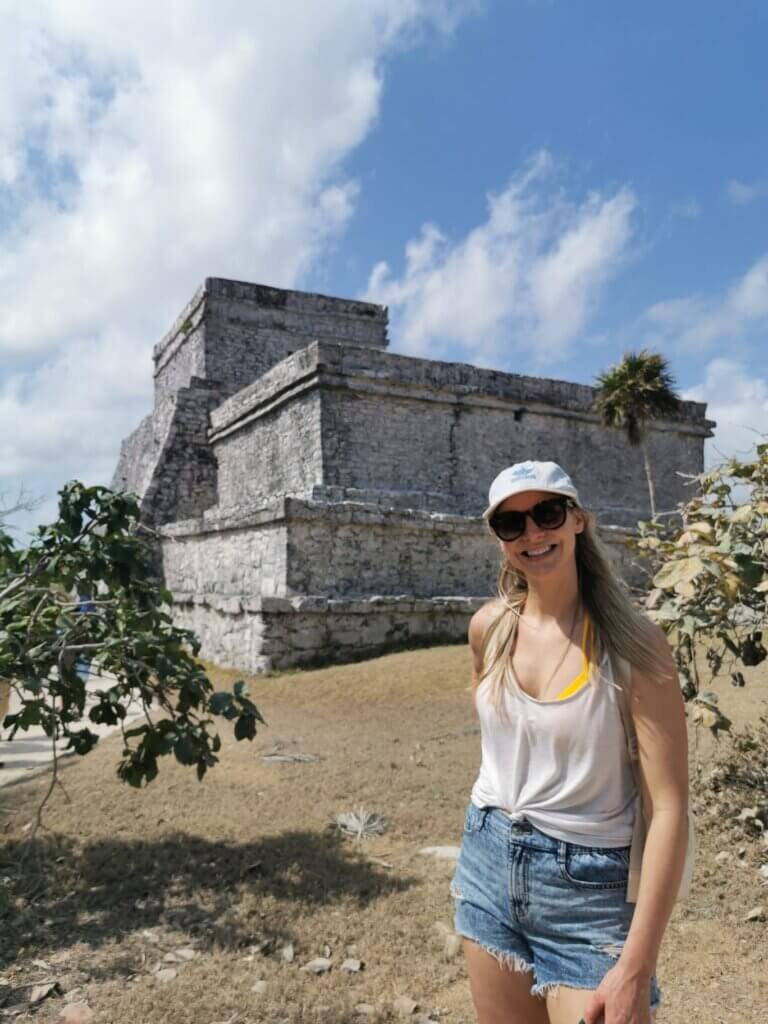
Don't worry, I did some other things while in Tulum, too.
Getting dive certified in Tulum
About Scuba Diving Certification
You can learn to scuba dive with one of the two major associations—PADI, the Professional Association of Dive Instructors, or SSI, Scuba Schools International—or you can choose a smaller, local association. I chose to go with PADI, and their Open Water Diver course is one of the most popular in the world. Getting your Open Water Diver certification consists of classroom or e-learning time, one day of learning basic skills in confined water, and two days (four dives) of practical experience in open water. This can all be slightly different depending on where and from whom you learn, and we’ll talk about that later. The most important thing in Open Water certification is not the time spent, but being able to demonstrate proficiency in skills.
For more detailed information on getting scuba certified, check out this blog post from PADI: Scuba Certification: Everything You Need to Know.
Tulum Diving Center
I got certified with Tulum Diving Center, a PADI-affiliated dive center. I had a wonderful experience and cannot recommend Hector, my dive instructor, highly enough. The total cost for the course—e-learning materials, and three days with 6 tanks and 4 dives—was $500. (To see the cost breakdown, click here.) I thought this sounded like a hell of a deal considering it included all equipment, transportation, entry fees for cenotes and boats, and even water and snacks for each of the three days. But just in case, I did a brief bit of online research. I found a PADI-affiliated scuba school in Boston, MA that would have cost me about $875.00 for the full certification. Then I found one in Fort Lauderdale Florida that was only $299. That price didn’t include transport of person or equipment to each site, but still is unbelievably cheap.
With all that being said, I thought the all-inclusive price for Open Water Diver certification at Tulum Diving Center sounded reasonable before signing up, and now, after completing the course, I think it is a GREAT deal for what you get. Besides price, which is somewhere around average, there are other factors that make learning to dive in Tulum a very special experience. We’re going to get into that shortly in “Why you should get dive certified in Tulum“. Stay tuned.
For more info, visit tulumdivingcenter.com.
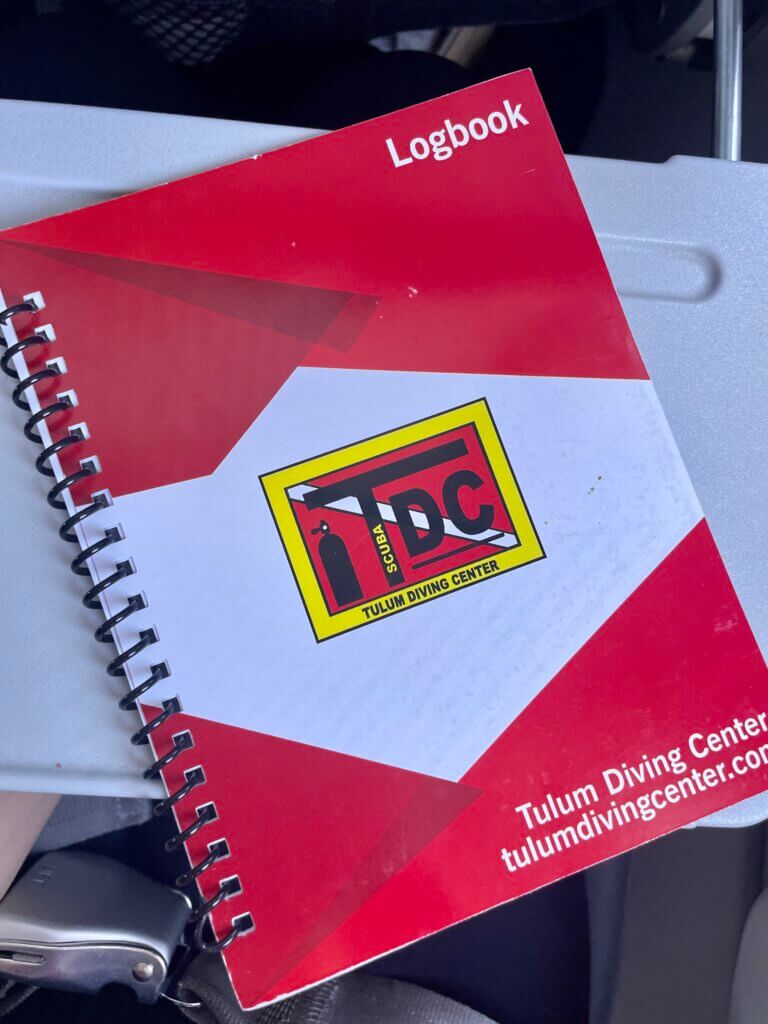
My official logbook to log all my dives!
Dive Certification Course: Learning the Language
The e-learnings are delivered to you by email, and you can learn the material at your own pace. All in all, it is about 10 hours of work. This part reminded me a lot of my life as a flight attendant. When I first started flight attendant training I had to learn airport codes and airplane parts, and a whole new language—the language of aviation. With scuba training, I had to learn how to speak without words under water. I learned the different pieces of equipment and how to care for them, and I learned industry terms like “buoyancy”, “trim”, and “equalizing”. Knowing I’ve learned other languages before—the language of aviation and my rusty but intermediate Spanish—made me feel confident that I’d be just fine learning, understanding, and using my newly acquired ‘language of diving’ in the real world.
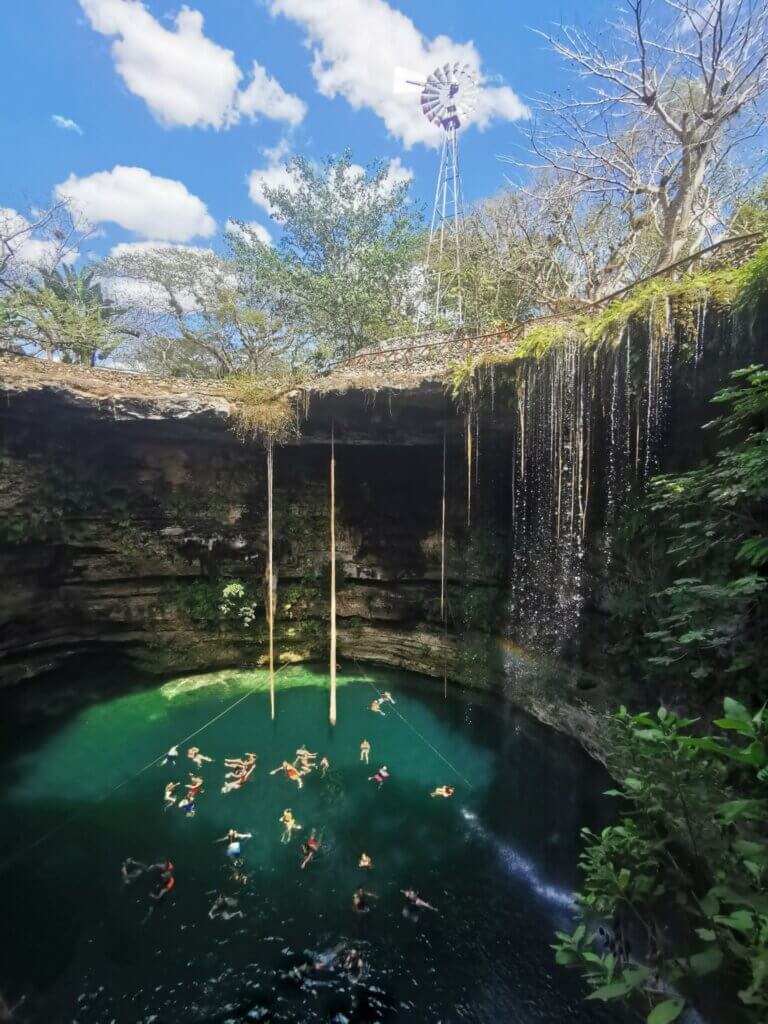
One of the thousands of cenotes in Tulum.
Why you should get dive certified in Tulum
One of the unique aspects of diving in Tulum is that the area is chock-full of cenotes. There are natural pools found scattered all around the Yucatan Peninsula. Most are fresh water, but some, like the first one I trained in, are brackish, meaning there is a mix of fresh and salt water. These cenotes are one of the popular tourist attractions in Tulum, and swimmers, snorkelers, divers, and influencers alike all flock to them as part of the Yucatan experience. Some of these cenotes are deep and dark, some are found in caves or grutas, some are like lakes, with lots of vegetation, and some are crystal clear and bright blue so that you can hardly believe they’re freshwater pools and not the clearest, cleanest tropical sea.
When going for your Open Water Certification, or getting certified to scuba dive, the first day in the water is learning lots of technical skills: How to set up your scuba kit, how to breathe into your regulator, how to clear your mask when water gets in (a truly scary experience the first time), and how to float like a diver and not flail like a fish out of water. For beginners, it is imperative that these skills are learned before getting into any currents, waves, or otherwise difficult conditions. And because of this, most people complete these first “dive” experiences in a pool. A chlorinated pool with cement surrounding you. And often the pool is full of other students.
This is the thing that truly sets Tulum apart as a great place to learn to dive. When you learn to scuba dive in Tulum, you won’t set foot in a swimming pool. Instead, you’ll learn the basics of scuba in a beautiful, crystal-clear cenote.
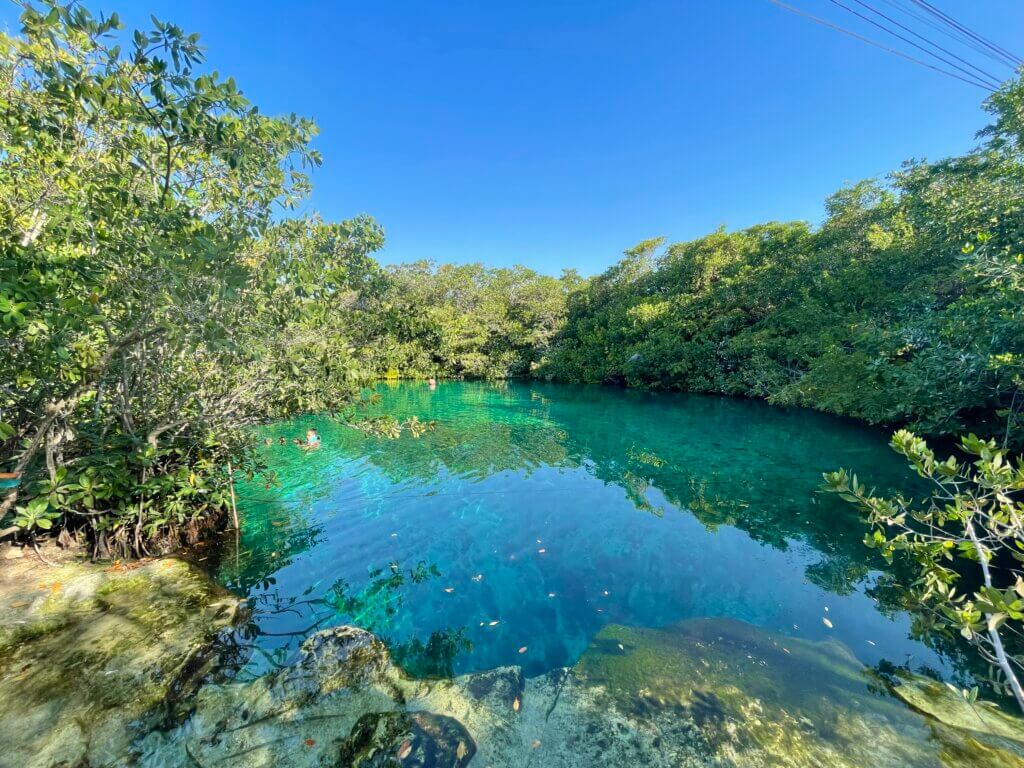
Casa Cenote, where I took my first breath under water.
My experience getting scuba certified in Tulum
Day 1
Despite signing up for the group course, my first day of diving ended up being a classroom of one. Apparently I was the only newbie to sign up for that day so I got one-on-one attention and feedback from my instructor. Also, as mentioned above, I got to do my confined water dives in a cenote!
The Cenote I was lucky enough to learn in is called Casa Cenote, and it is so beautiful that people visit to snorkel, swim, and kayak there. It is also a popular spot for dive schools because of the crystal-clear conditions and shallow depth.
Being immersed in clean, clear, turquoise water, and getting to see fish, rocks, and mangroves from below the depths while taking my first breath underwater was truly an incredible feeling. I got to swim with actual wildlife for my first introductory dive. I got to see changes in depth and an interesting underwater landscape. A curious fish acted as audience and cheering squad while I completed my technical skills like mask removal and regulator retrieval. Guys, it was fucking AMAZING. I couldn’t stop thinking about how lucky I was to be there, in such a beautiful place, instead of freezing in a sterile, cement swimming pool.

All packed up and ready to go.

``Welcome to the office,`` Hector, my dive instructor told me.
Day 2
The second day of diving was in a different cenote with a totally different topography and water conditions. It was called Cenote Tankah and was set in a small pueblo just outside of Tulum. The water reminded me of a lake, darker and greener than the day before, with big blooms of lily pads dotting the surface. Getting to see their roots and stems at a depth of 28 ft. was kind of magical. And that paired with the giant, moss-covered boulders in all shapes and sizes, the varying depths of the underwater world, all surrounded by silence, save for the steady blurb of my regulator, made it feel like I was on another planet. A Dr. Seuss book, come to life.
I had a diving buddy on the second and third day. When we began our first dive together, towing one another for “tired diver” practice, we spotted a large water snake on the far side of the cenote by the mangroves. I’m not going to lie, it scared the shit out of us, but we never saw it again for the rest of the day. What we did see was lots of interesting underwater vegetation and snapping turtles kicking and clawing their way to the surface.
The hardest part of Day 2, besides seeing the snake, was the mask removal practice. I’d removed and replaced it the day before, but this time I had to remove my mask, and hold it while swimming for about 15 feet. It’s only a minute or two, but when your eyes and nose are exposed to the water, it is a horrible feeling. And it is supposed to be.
Open Water Diver training reminded me a lot of flight attendant training. Basically, you’re going over the worst-case scenarios and learning how to respond to them in a calm way. In flight attendant training, this means physically practicing evacuation procedures. We deploy slides and set up rafts and fight fires at our training center. In Open Water Diver training, you learn how to stay calm and keep breathing even when your mask is gone, what to do when your oxygen runs out or when you lose your regulator. You practice these scenarios over and over so that, in the event of something non-normal happening, your muscle memory will kick in and you’ll know just what to do. No panicking required, just fall back on what you know.
It was comforting to have had the experience of learning a new language before, and of doing lots of physical skills practice for emergencies through flight attendant training and recurrent training each year. Scuba diving skills were completely new to me, but the experience of learning them felt familiar and helped me to relax during the tricky bits.
Day 2 of diving was also great practice for buoyancy—or floating through the water without sinking or rising to the surface. The cenote we dove in was large and changed from shallow to deep, over and over, giving my buddy and I a chance to be constantly adjusting our buoyancy. We inhaled and felt ourselves rise over large rocks, turned a soft green from their carpet of plants, then exhaled to lower ourselves down to the sinking depths, a whole new angle and perspective. Controlling your body, floating and moving seamlessly underwater, is like, really fucking cool.
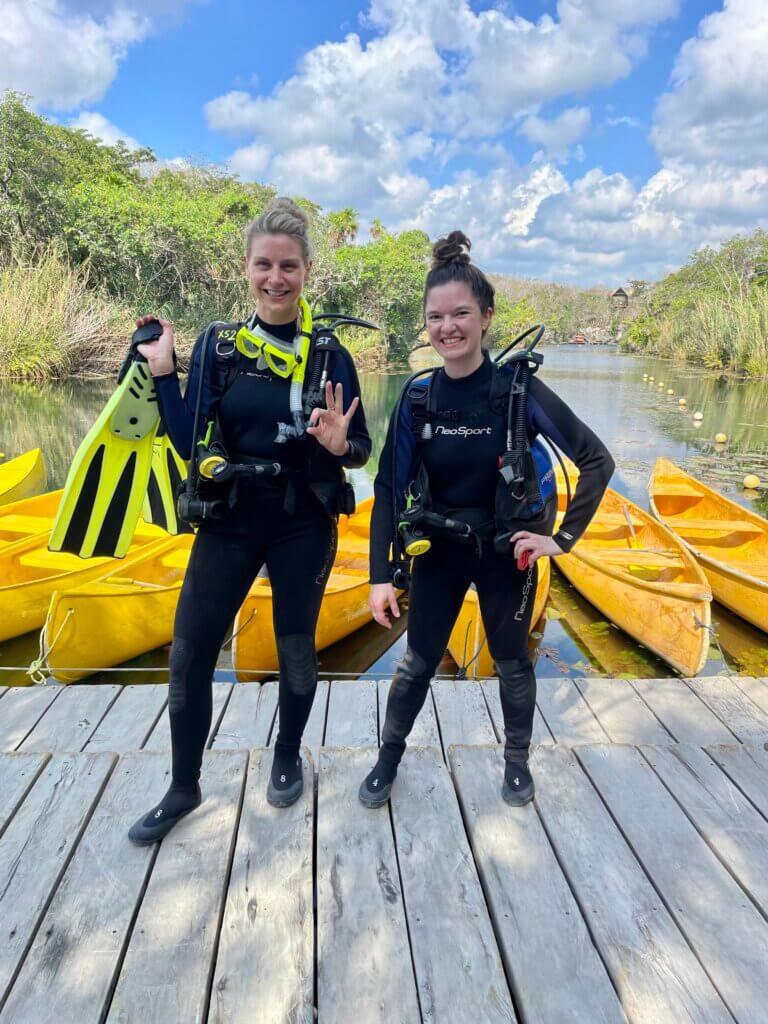
Having a buddy made learning to dive even more fun.
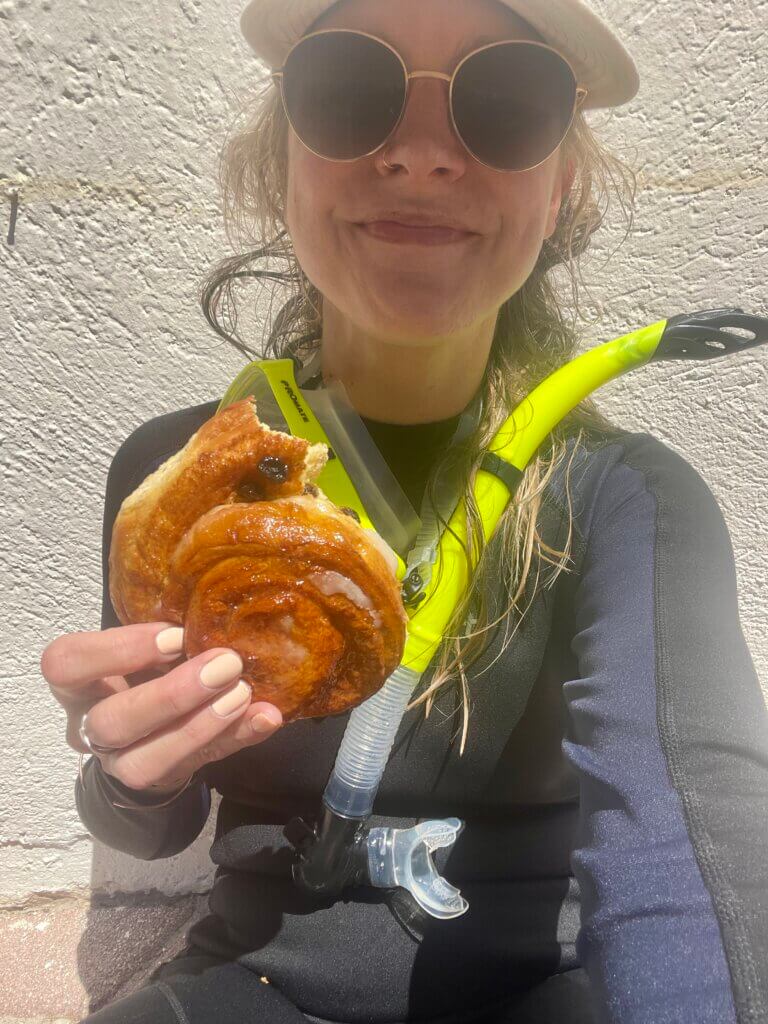
Diving was fun, but snack time was a highlight of my day.
Day 3
Day 3 of our Open Water Diver certification took us to the sea, for open water dives 3 and 4. I was significantly more nervous to try diving in the ocean. Not only were we going deeper—to the 60 foot limit for open water divers—but we would also be facing different conditions—waves, a current, salt water, different wild life, and boats.
It was harder and it was scarier; The salt burned my nose during my final mask removal exercise, the surface was choppy, causing my buddy to be seasick several times, and hearing boats overhead was unnerving. But it was also wonderful. We saw a nurse shark, a big, long barracuda, a school of Bermuda Chubs, and a puffer fish. We swam not just over, but through coral formations, the surface glimmering above through a ring of life like I was The Little Mermaid herself.
I controlled my buoyancy, I hovered, I didn’t panic. I knew I’d pass my course. And now the other 70% of the earth is open to me. I can travel by land or by sea. I can run races in cities around the globe, and I can swim 60 feet below the water’s surface, with sharks, and fish, and swaying plants.
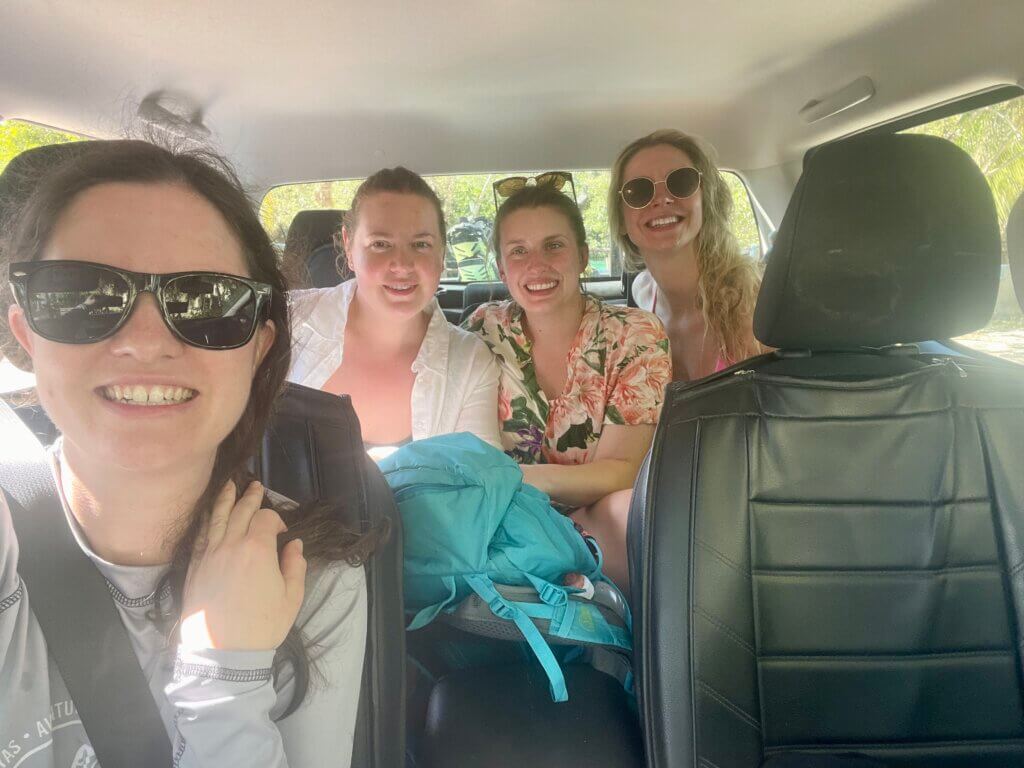
Beaming after passing our Open Water Diver Certification with new friends.
My experience getting scuba certified in Tulum was incredible, eye-opening, and fun. I can’t wait to plan my next diving trip to practice my newly acquired skills. I’m a bit nervous that by the next time I’ll have forgotten some things, and PADI recommends taking a refresher course if you go six months without diving. Guess that means I’ll have to plan another vacation!
If you are going to be in the Tulum area and have ever considered diving, go get certified with Tulum Diving Center. If you’ll be in a different part of Mexico—Cancun, Playa del Carmen, Acapulco, Baja California, then check out some of the dive centers there. It was a great experience for me, and I bet it will be for you, too.
If anyone has kick-ass recommendations for diving trips, please send them my way! I’ll be checking the comments section religiously. And if you have any further questions feel free to reach out in the comments or via Instagram.
And that’s all she wrote, folks. I hope you’ve enjoyed reading this post about getting scuba certified in Tulum as much as I enjoyed writing about it. Now it’s time to get back to my trip and enjoy the final days of vacationing in Mexico City.
Here’s to staying calm, breathing easy, and exploring new worlds.

Neutrally buoyant AF



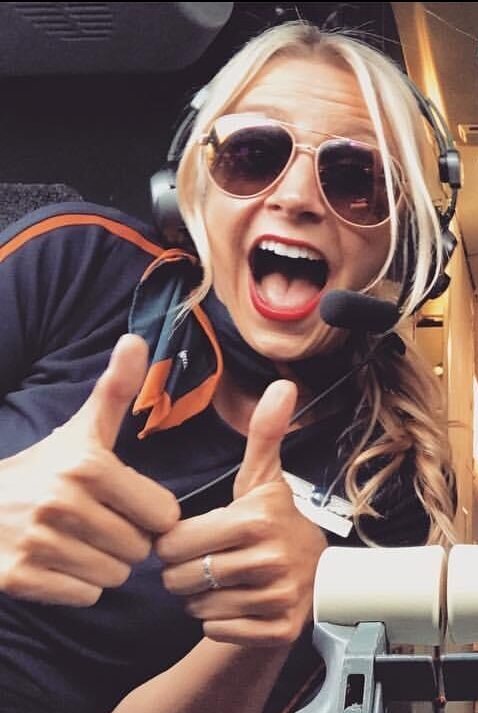
Jim Hope
Jason and I got certified maybe 15 years ago and it was an amazing experience. Like you said, it is incredible to see whats under the water that you never see otherwise. It’s a whole new/beautiful world!
Toni
It sure was incredible! Now I need to book another dive trip so I don’t forget all my skills! (And because who doesn’t love a tropical trip?)
Rae
Ahhhhh Tone this was so fun to read! It made me relive my very first experience, doing an intro dive (no certification required) at the Great Barrier Reef. I was immediately hooked and had to get certified. It truly is an other worldly experiments. I’m so glad you did this!
Toni
<3333 YEs, maybe we can dive together someday. Lots of places in FL...although more exotic would be good, no?
COREY
Oooo! This is so cool! The cenotes are so beautiful. I love that you did this!! I enjoyed the pictures and reading and learning about scuba! Oh that beautiful ocean! <3 <3
Toni
I think getting certified on vacation is the way to go! So gorgeous! Now I’m just hoping I don’t forget all the skills I learned!